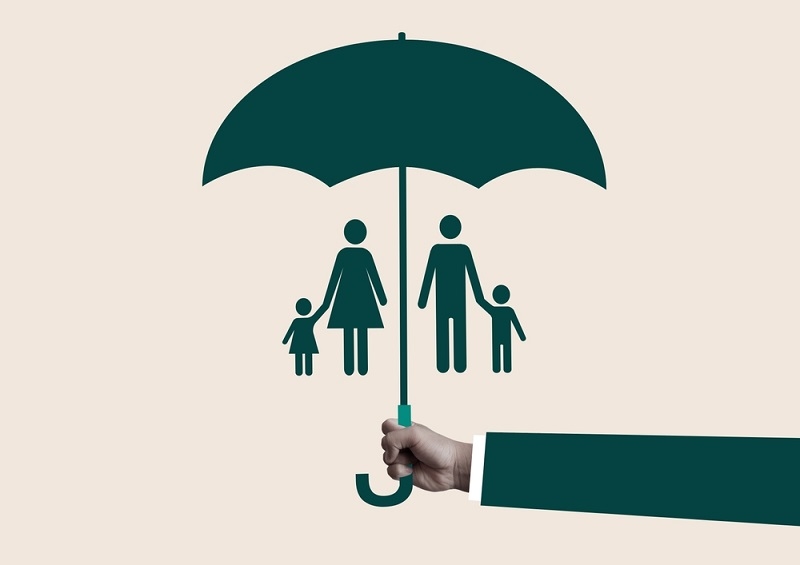
Have you ever thought about what would happen to your family if you weren’t there to provide them with the financial help they rely on? Life happens; we get it! When we think about the worst that can happen, it’s hard to admit to ourselves, let alone others. Preparing for the unexpected is one of the most responsible and loving things you can do for yourself and your family, and this is where life insurance comes in.
This guide will discuss life insurance and why you shouldn’t wait to get it. You’ll learn about life insurance basics and get a rundown of term vs. whole life. This article covers everything you need to understand—and most importantly, why waiting can cost you much more than money!
Essentially, life insurance is a contract between you and an insurance company. You agree to pay monthly or annual premiums; in exchange, the insurance company will pay your beneficiaries a lump sum (a death benefit) when you die.
The intention? To leave your family in a better financial position than you can no longer do so.
That money can be used for:
At a basic level, what is life insurance? Other than a financial cushion for those you love the most?

Before you select a policy, it's essential to understand how life insurance operates.
A basic understanding of life insurance will allow you to make an informed decision about policy selection that reflects your family's needs and financial objectives.
One of the most common questions is the difference between term and whole life insurance. Here's a simplified comparison:
| Feature | Term Life Insurance | Whole Life Insurance |
| Duration | Set period (10, 20, or 30 years) | Lifetime coverage |
| Cost | Lower premiums | Higher premiums |
| Cash Value | No | Yes—builds over time |
| Ideal For | Temporary needs | Long-term wealth planning |
| Payout | Only if death occurs during the term | Guaranteed (as long as premiums are paid) |
If you’re starting a family or buying your first home, term life is often an affordable way to get coverage. But if you want a lifelong financial tool with savings features, whole life may be worth the higher cost.
One of the biggest myths about life insurance is that you don’t need it until you’re older. The truth? The best time to buy life insurance is now, especially when you’re young and healthy.
Why waiting is risky:
Whether you're single, married, or have kids, understanding when to buy life insurance is about more than age—it's about readiness.
You might think life insurance is only for parents or breadwinners. But many people benefit from it, including:
Even stay-at-home parents contribute tremendous value; their absence would create financial strain. Everyone should consider some form of coverage, no matter their role.
Still unsure if it’s worth the investment? These compelling benefits of life insurance might change your mind:
Your loved ones won’t struggle with bills, debts, or daily expenses during a difficult time.
Life insurance ensures these responsibilities, from car loans to credit card debt, don't fall on your family.
Life insurance can be an innovative tool for passing on wealth and minimizing estate taxes.
Knowing that your loved ones are cared for brings emotional relief and clarity.
Some policies allow you to borrow against their cash value, which is helpful for college tuition or emergencies.
With so many advantages, getting life insurance isn’t just smart—it’s essential.
There’s no one-size-fits-all answer, but here’s a simple way to estimate your coverage needs:
Life Insurance Coverage = (Annual Income × 10–15) + Outstanding Debts + Future Expenses (e.g., college, funeral) - Existing Savings
Factors to consider:
This helps ensure the policy sufficiently protects your family for years after your passing.
With so many options, selecting a policy can be overwhelming. Here are the steps to simplify the process:
Start with why you’re buying coverage. Is it to repay debt, support your family, or invest long-term?
Could you determine which structure best fits your current and future financial goals?
Don’t overextend. Choose a policy that provides sufficient coverage but fits comfortably within your monthly spending.
Look for companies with strong financial ratings, good customer service, and transparent terms.
Riders are optional add-ons that can enhance your coverage—for example, waiver of premium, accidental death, or critical illness coverage.
Skipping life insurance may save money now, but it can cost your loved ones dearly later. Without it, they may face:
In short, not having coverage can result in emotional and financial hardship at the worst possible time.
Myth 1: “I’m too young to need it.”
Reality: Youth is the perfect time to buy—it’s cheaper and easier to qualify.
Myth 2: “Only breadwinners need life insurance.”
Reality: Every family role has financial value, from caregivers to part-time earners.
Myth 3: “It’s too expensive.”
Reality: Basic term life insurance can cost less than a cup of coffee daily.
Myth 4: “I have coverage through work.”
Reality: Employer policies are usually limited and may not follow you if you leave the job.
A well-rounded financial strategy includes savings, investments, retirement planning, and yes, life insurance.
By integrating coverage into your plan, you ensure:
Consider life insurance a foundational pillar of your financial health, not an afterthought.
Life assurance is not just a financial product; it's a promise to your loved ones that you'll care for them, no matter what. If you know what life insurance is or are comparing term vs. whole life insurance and understand the advantages of life insurance, you can make a better decision.
Please don't wait until it's too late. The best time to secure your family is now. You can start and find your coverage options today to ensure a safe tomorrow.
This content was created by AI